
BENGALURU- India’s largest LCC, IndiGo Airlines (6E), continues to solidify its dominance across key airports in the country. IndiGo is India’s largest airline by market share and fleet size.
The airline has built a formidable network, offering extensive domestic and international flights from across different Indian metropolitan airports.
The below analysis of IndiGo’s operations highlights its significant presence at major Indian airports and its busiest routes. The airline continues to reaffirm its status as a market leader in the aviation industry.
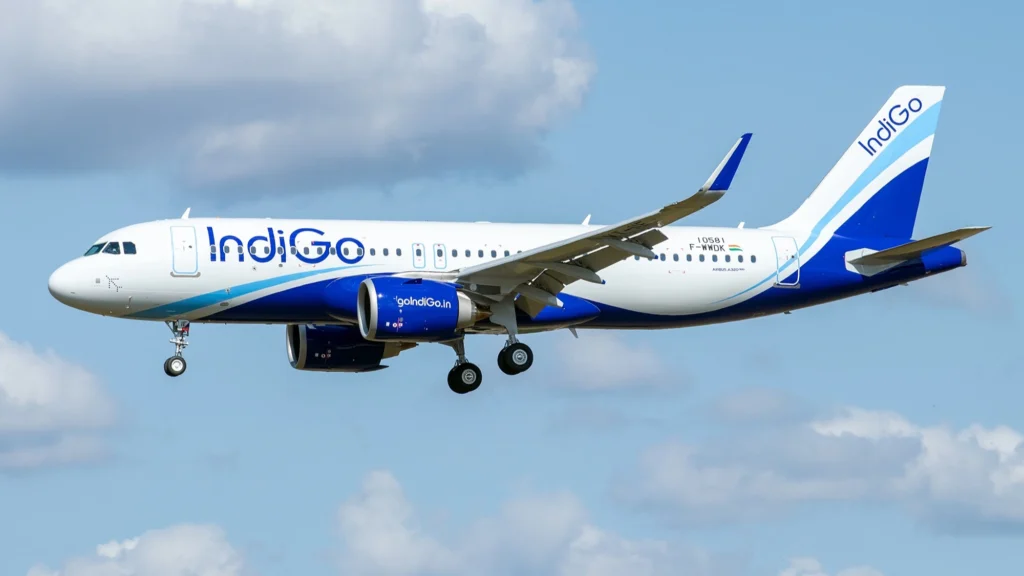 Photo: Eurospot
Photo: EurospotIndiGo’s Market Share at Key Airports
The data presented here reveals IndiGo’s commanding share at India’s five busiest airports based on total available seats. The airline’s dominance is particularly evident in Hyderabad (HYD) and Chennai (MAA), where it holds a substantial market share.
Delhi (DEL):
Indira Gandhi International Airport is the busiest airport in India. With a 40% capacity share and 17.9 million seats, Delhi remains IndiGo’s busiest and most crucial hub. As the capital city’s primary airport, Indira Gandhi International Airport serves as a strategic center for domestic and international flights in the country.
Mumbai (BOM):
Chhatrapati Shivaji Maharaj International Airport is the second-busiest airport in the country. IndiGo Holds a 43% market share at Mumbai Airport with 13.9 million seats. Mumbai’s Chhatrapati Shivaji Maharaj International Airport is another key airport in the country. Given Mumbai’s position as India’s financial capital, the airline operates extensive domestic and international flights from Mumbai Airport.
Bengaluru (BLR):
Bengaluru’s Kempegowda International Airport comes in next as the 3rd most-busiest airport in the country. At Bengaluru Airport, IndiGo enjoys a 53% capacity share with 12,588,898 seats. IndiGo had a 60%+ market share at Bengaluru Airport. However, the airline’s capacity share has reduced over the past few years. One of the major factors in this was Akasa and Air India Express designating Bengaluru as their primary hub. Both of the airlines have successfully launched multiple domestic and international flights, which plummeted IndiGo’s share.
Hyderabad (HYD):
With a staggering 65% market share and 10.8 million seats, Hyderabad’s Rajiv Gandhi International Airport is where IndiGo has the highest control. This dominance allows IndiGo to be the leading airline in one of India’s fastest-growing metro cities.
Chennai (MAA):
At Chennai International Airport, IndiGo holds a 60% share with 8 million seats. IndiGo holds 2nd largest market share at Chennai Airport, after Hyderabad.
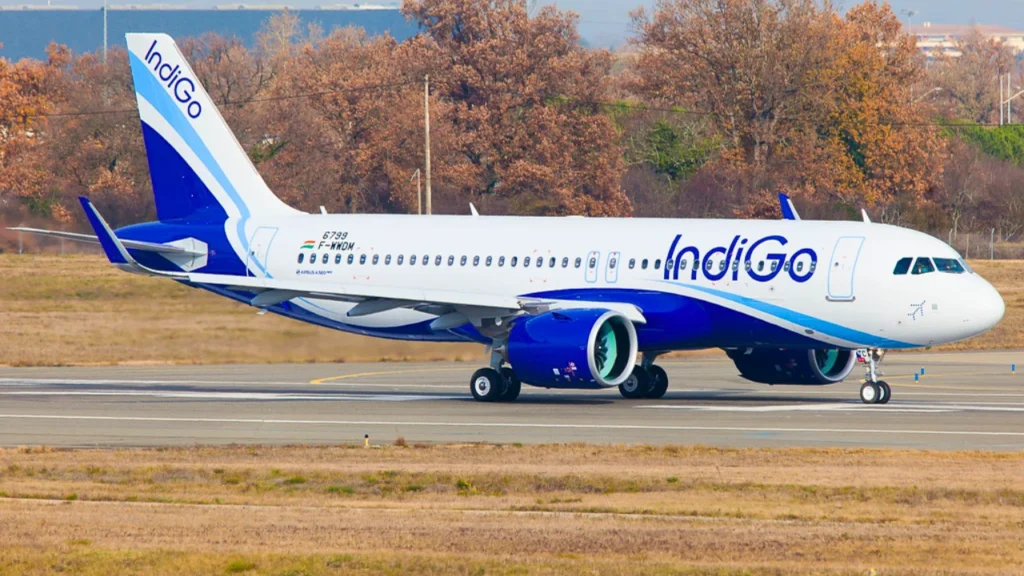 Photo: Clément Alloing
Photo: Clément AlloingTop 5 International Routes:
- Dubai (DXB) – Mumbai (BOM): As one would have expected, Dubai is at the top of the busiest international destinations for Indian travelers. IndiGo’s strong presence on this route helps cater to both business and leisure passengers. The airline operates 4 daily flights from Mumbai, which makes it the busiest route for the airline.
- Singapore (SIN) – Chennai (MAA): Singapore is a major destination for travelers from South India. Chennai-Singapore is the 2nd largest international sector for the airline in terms of seats offered. IndiGo operates 3x daily flights between Chennai and Singapore with significant market share on this route.
- Delhi (DEL) – Kathmandu (KTM): It’s a tie between the 2nd and 3rd busiest routes. IndiGo will operate 3x daily flights between Delhi and Kathmandu from March 2025. As the capital of Nepal, Kathmandu is a key international destination for Indian travelers, especially tourists and business passengers.
- Doha (DOH) – Mumbai (BOM): Another strong connection to the Middle East, this route supports both corporate and VFR (Visiting Friends and Relatives) traffic. IndiGo operates 3x daily flights between Mumbai and Doha. All three flights are now being operated by wet-leased Boeing 737 MAX 8 (737-8) from Qatar Airways (QR).
- Hyderabad (HYD) – Doha (DOH): The Middle Eastern market continues to be an important segment for IndiGo. The airline operates 20x weekly flights in this sector, making it the 5th largest international sector for IndiGo.
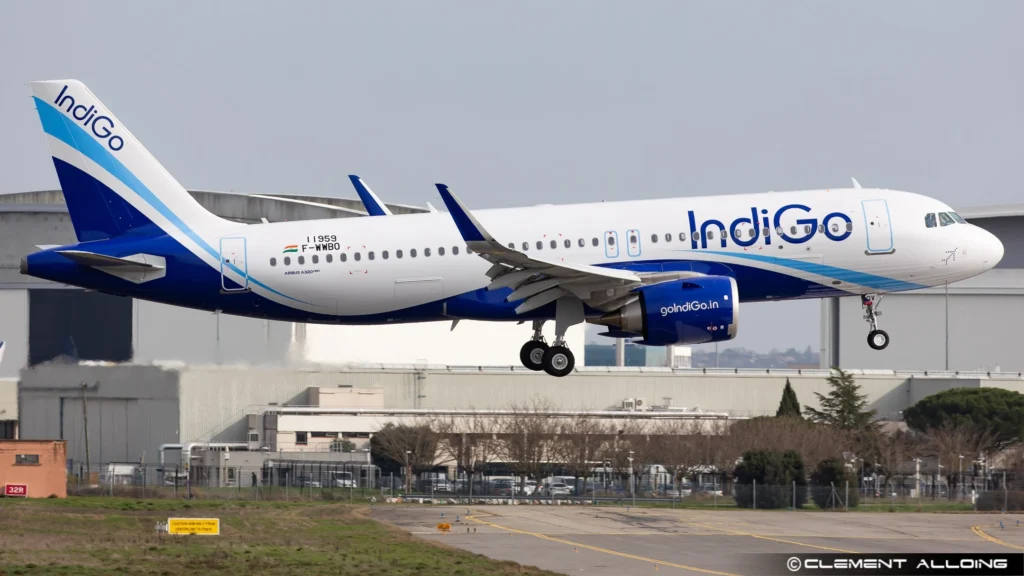 Photo: Clément Alloing
Photo: Clément AlloingFactors Driving IndiGo’s Market Dominance
IndiGo’s success is not accidental; rather, it is the result of well-planned strategies that helped the airline. The airline has built an impressive network over time. IndiGo focuses on key parameters such as efficiency, affordability, and network expansion.
1. Cost Leadership Strategy
IndiGo has built its reputation as a low-cost carrier (LCC) offering affordable fares without compromising on operational efficiency. By maintaining a single-type aircraft fleet (primarily Airbus A320 and A321), the airline has significantly reduced maintenance and training costs, allowing it to pass on cost savings to customers.
2. High Aircraft Utilization
IndiGo operates with a quick turnaround time, maximizing aircraft usage to ensure efficiency. IndiGo is also one of the fastest airlines to put an aircraft into service from the time the aircraft is delivered. This approach has allowed it to offer frequent flights on high-demand routes, making it the preferred airline for many travelers.
3. Domestic and International Expansion
By strategically increasing its domestic presence while simultaneously expanding internationally, IndiGo has positioned itself as the airline of choice for Indian travelers. IndiGo has started focusing more on INTL routes now. The airline has been adding international routes steadily, increasing connectivity beyond South Asia.
4. Consistent Fleet Expansion
IndiGo’s growing fleet includes modern aircraft designed with high fuel efficiency. The airline has also been considering long-haul expansion plans with new aircraft acquisitions, ensuring it remains competitive in international markets.
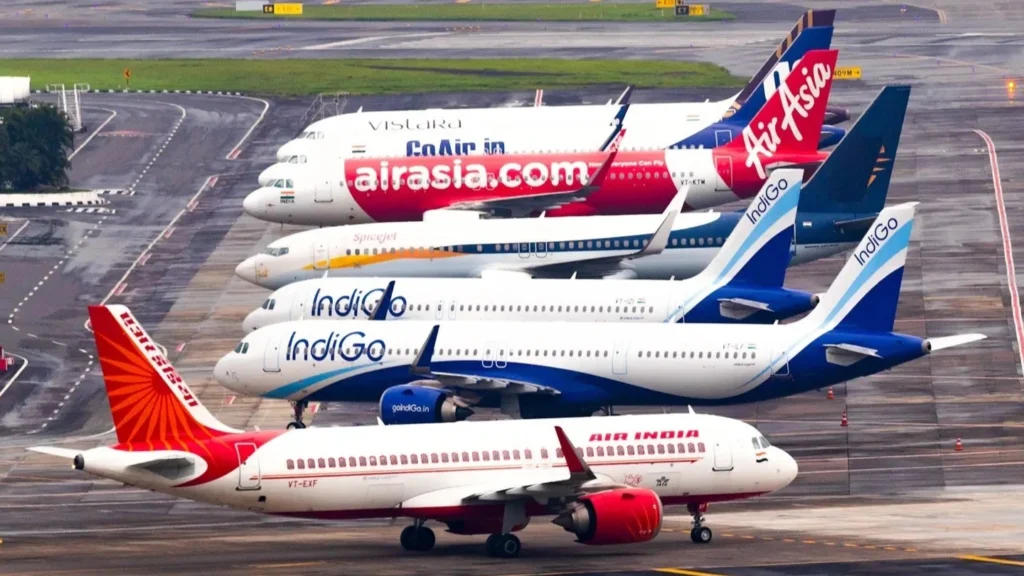 Photo: Siddh Dhuri | MumbaiPlanes
Photo: Siddh Dhuri | MumbaiPlanesChallenges for IndiGo ahead
Despite its success, IndiGo faces several challenges that could impact its growth trajectory.
1. Competition
India’s aviation sector is becoming highly competitive, especially with airlines like Air India (AI) after the privatization and Akasa Air (QP) expanding their networks. IndiGo will face intense competition from Air India, which has a large aircraft order including substantial Widebodies as well.
To likely take up market share on certain important routes, IndiGo has been diversifying its fleet. IndiGo, which will receive its first widebody aircraft only in 2027/2028, is wet-leasing widebody aircraft from other airlines. This is rather a smart move by IndiGo.
2. Rising Fuel Costs
Fuel costs constitute a significant portion of operational expenses for airlines. Any fluctuation in fuel prices can impact profitability, making cost management crucial for IndiGo’s long-term success.
3. International Growth Constraints
While IndiGo continues to expand its international presence, constraints in bilateral agreements are inevitably going to impact its growth trajectory.
Additionally, the absence of wide-body aircraft limits the airline’s ability to compete on long-haul routes. Though IndiGo will receive its first A321XLR in 2025, the range of these aircraft is not up to the hype. There has been a significant dip in the maximum range of XLR aircraft, which was expected to have a 4700 nm range. Future fleet expansion plans may determine how effectively IndiGo can enter new markets.
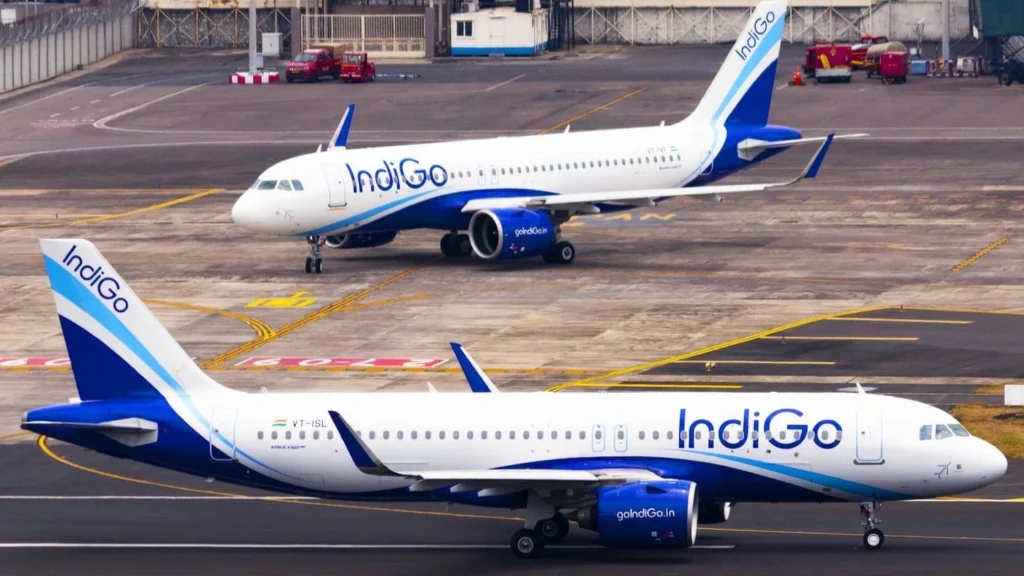 Photo: Mumbai Planes | Siddh Dhuri
Photo: Mumbai Planes | Siddh DhuriWill the dominance continue?
IndiGo’s dominance in Indian aviation is evident through its strong presence at major airports. With a well-established domestic network and growing international development, IndiGo will remain the airline of choice for millions of passengers.
IndiGo’s strategic positioning at the major airports of India ensures a strong foothold in India’s aviation sector. This has enabled the airline to provide efficient connectivity between metro cities and beyond. This has also helped IndiGo become an airline of the choice for international carriers looking for a codeshare partner in India.
IndiGo has embraced a bold expansion strategy post-pandemic. The airline ventured into new markets across Central Asia, Africa, and Southeast Asia. The airline has also introduced unique routes, such as Penang and Langkawi, where no competitors are likely to operate in the near future. This willingness to explore unconventional destinations sets IndiGo apart, making it one of the most dynamic and sought-after carriers in the country.
While challenges exist, the airline’s cost-efficient model, strategic planning, and fleet expansion efforts will position it well for continued success. As it looks to the future, IndiGo’s ability to adapt and innovate will play a crucial role in maintaining its leadership in the Indian aviation industry.
Featured Image By Siddh Dhuri | Mumbai Planes
Stay tuned with us. Further, follow us on social media for the latest updates.
Join us on Telegram Group for the Latest Aviation Updates. Subsequently, follow us on Google News
IndiGo Receives Most Airbus Aircraft Deliveries in 2024
The post IndiGo Airlines Top 5 Domestic Base and International Routes appeared first on Aviation A2Z.















